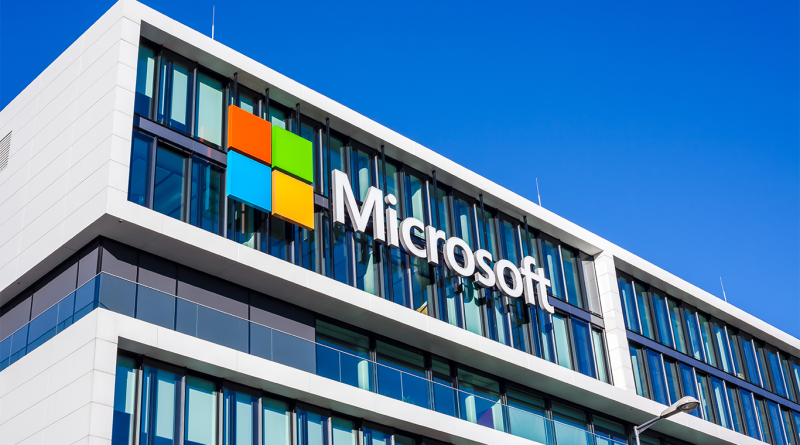Microsoft Bets $80 Billion on AI Data Centers and Sustainability
The race to dominate the AI landscape is pushing tech giants to invest in unprecedented infrastructure expansions. Microsoft has announced an ambitious $80 billion plan to develop AI-focused data centers in the United States by 2028. This bold move underscores the increasing demand for AI-driven cloud services, sustainability innovations, and hyperscale computing solutions.
Why AI is driving massive investments in data centers
Artificial intelligence is no longer a niche technology—it’s becoming a cornerstone of business operations, consumer experiences, and scientific advancements. AI workloads, which power applications such as language models, generative AI, and advanced analytics, require exponentially more computing resources than traditional cloud workloads.
One of the primary reasons for this surge in demand is the rise of generative AI tools like OpenAI’s ChatGPT, DALL·E, and Codex, all of which require immense computational power to train and deploy. These workloads differ from conventional cloud tasks like storage or simple database queries. Training a large language model, for example, involves processing petabytes of data across GPUs (graphics processing units) and TPUs (tensor processing units), demanding specialized hardware and high-performance infrastructure.
As businesses integrate AI into workflows—automating customer support, optimizing supply chains, and enhancing decision-making—the need for robust and scalable infrastructure has skyrocketed. Hyperscale data centers, which support this scale of operations, have become critical for tech companies like Microsoft, Amazon Web Services (AWS), and Google.
According to market analysts, the global data center market for AI applications is projected to grow at a compound annual growth rate of 20% through 2030. This growth is fueled by industries ranging from healthcare and finance to retail and manufacturing, all seeking to leverage the transformative power of AI.
Microsoft’s $80 billion strategy and its competitive edge
Microsoft’s $80 billion investment plan, spanning 2024–2028, is a calculated move to expand its dominance in the AI and cloud computing markets. This initiative will primarily focus on scaling its hyperscale data centers, optimizing them for AI workloads, and embedding sustainability at their core.
The company’s competitive advantage lies in its ecosystem of AI partnerships and products. Microsoft’s collaboration with OpenAI, the developer behind ChatGPT and DALL·E, has placed it at the forefront of generative AI. Its Azure OpenAI Service enables enterprises to seamlessly integrate powerful AI tools into their operations.
Additionally, the investment strengthens Microsoft’s position against cloud competitors like AWS and Google. AWS is currently the market leader, with Google ranking third, but Microsoft is rapidly gaining ground with its enterprise-focused offerings and product integrations. Features like Copilot for Microsoft 365 and AI-powered tools for developers in Azure differentiate it from the competition.
The company is also developing specialized AI chips to reduce reliance on third-party suppliers like NVIDIA, enabling cost efficiency and improved performance for its AI workloads.
While AWS and Google are also investing heavily in AI infrastructure, Microsoft’s approach—combining partnerships, hardware, software, and services—gives it a significant edge in the competitive hyperscale market.
Sustainability and energy efficiency in AI data centers
Microsoft’s $80 billion investment comes with a commitment to sustainability and energy efficiency. The company has already pledged to become carbon negative by 2030, meaning it will remove more carbon from the atmosphere than it emits. This goal plays a pivotal role in its strategy to address the environmental challenges posed by hyperscale AI data centers.
One of Microsoft’s key approaches to sustainability is its focus on renewable energy integration. The company is actively investing in wind, solar, and other renewable energy projects to power its data centers. By 2025, Microsoft aims to have 100% of its electricity consumption matched by renewable energy purchases. These efforts help mitigate the environmental impact of energy-intensive AI operations while ensuring compliance with evolving regulations on emissions.
Another innovative solution lies in liquid cooling technology, which Microsoft is exploring to manage the heat generated by powerful AI hardware. Unlike traditional air cooling, liquid cooling systems use significantly less energy while improving performance and reliability. In addition, Microsoft is experimenting with underwater data centers—a bold concept that could revolutionize data center efficiency by using natural water temperatures to reduce cooling costs.
Regional and economic impacts of Microsoft’s investment
Several states have already benefited from Microsoft’s existing data centers, including Virginia, Texas, and Iowa. These locations are strategically chosen based on factors like proximity to renewable energy sources, availability of land, and access to skilled labor. With this new round of investments, more regions are likely to see significant economic development tied to Microsoft’s growth.
Job creation is one of the most immediate impacts of these data center projects. Construction of hyperscale data centers requires engineers, contractors, and local laborers, while ongoing operations create long-term positions in IT, facility management, and security. For smaller communities, the influx of jobs and infrastructure improvements can be transformative.
Another factor driving Microsoft’s regional strategy is its reliance on tax incentives and partnerships with local governments. In many cases, state and local governments offer tax breaks or other financial incentives to attract major tech investments. These partnerships benefit both sides: Microsoft reduces its costs, while local economies gain from the influx of capital, jobs, and development.
Microsoft’s $80 billion investment signals a defining moment for the future of AI and cloud computing. As AI technologies become embedded in nearly every aspect of modern life—from workplace tools and consumer applications to healthcare and manufacturing—the demand for robust, scalable infrastructure will only accelerate.
Sources:
To keep up-to-date with our latest construction news, subscribe to our newsletter today.
